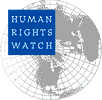
![]()
By mid-1998, the war in Afghanistan was well into its twentieth year. Following the withdrawal of the last Soviet troops in 1988, the fall of the government of Dr. Najibullah in 1992 by resistance forces marked the beginning of a bloody civil war among shifting alignments of the resistance forces.3 The Taliban, a movement of religious students (talibs) from the Pashtun areas of eastern and southern Afghanistan who had been educated in traditional Islamic schools in Pakistan, emerged in 1994 in part as a reaction to the failure of the other Afghan factions to end the fighting and establish a government that could ensure some peace and stability in the country. When the Taliban took control of the city of Qandahar in 1994, they forced the surrender of dozens of local Pashtun leaders who had presided over a situation of complete lawlessness. It was in this context that the Taliban acquired a reputation for sweeping into power with little bloodshed and with the support of the local population. However, these characteristics of the Taliban's military strategy did not hold true in its battles for Herat, Kabul, or the north.4
The Taliban's early victories were followed by a series of defeats, as their efforts to take the western city of Herat and the capital Kabul in early 1995 resulted in heavy losses. It was at this point that Pakistan reportedly began providing extensive assistance to the Taliban.5 Such support was crucial in the Taliban's successful offensives on Herat in August 1995 and in a lightning offensive in September 1996 that gave the Taliban control of Kabul.
As the Taliban consolidated its hold over Kabul and the rest of the country, the alliance of opposition parties in the north remained riven by feuds among the various factions: the Tajik-dominated Jamiat-i Islami of Burhanuddin Rabbani and Ahmad Shah Massoud; the Uzbek-dominated Junbish of Gen. Abdul Rashid Dostum; the Hazara Hizb-i Wahdat with its stronghold in the central mountainous region of the country known as Hazarajat; and the predominantly Pashtun Hizb-i Islami of Gulbuddin Hekmatyar. The history of bloodshed among all of these parties dates from before the fall of Dr. Najibullah’s government in 1992. Battles for control of Kabul among these factions in 1993-1995 destroyed at least one-third of the city, killed thousands of civilians, and drove a half million refugees to Pakistan.6 As party leaders frequently had only nominal control over their commanders, much of the northremained a patchwork of fiefdoms under the authority of various warlords. For civilians there was little security from murder, rape and extortion.
In May 1997 the Taliban launched another offensive on Mazar-i Sharif. This time, they received support from Dostum's second-in-command, Gen. Malik Pahlawan, who apparently believed he had struck a deal to share power with the Taliban and ousted Dostum in a coup.7 When the Taliban reneged on the agreement and began disarming local forces, resistance broke out first in Hazara neighborhoods, and the Taliban found themselves trapped in a city that had turned murderous on them. Hundreds of Taliban were attacked in the streets and killed, and at least 2,000 taken prisoner, only to be summarily executed and their bodies dumped in wells or taken to remote desert sites and left lying in the open. Most analysts appear to agree that General Malik was responsible for many of the summary executions of the Taliban prisoners. However, a large number of Taliban forces were reportedly gunned down in the streets by the Hazara Hizb-i Wahdat. Malik fled to Iran, and Dostum returned. Driven back after a subsequent attack on Mazar in September 1997, retreating Taliban troops who may have included Balkh Pashtuns massacred Hazara civilians in Qizalabad, south of the city on the road to Herat.
Pakistan reportedly was again instrumental in providing support for the Taliban offensive that began in July 1998. As the Taliban neared Mazar this time, a number of opposition commanders left the city, and Jamiat fighters reportedly looted their own office. Once again, the Taliban relied on defectors to clear a way into the city for them, but this time they demanded guarantees that they would not be double-crossed. Pashtun militia commanders from Balkh who had become disillusioned with Hekmatyar agreed to join forces with the Taliban and move in behind the main Hizb-i Wahdat force encamped at Qala Zaini, a walled area west of the city. Trapped, virtually the entire Hizb-i Wahdat force, estimated at between 1,500 and 3,000, was killed there or on the roads leading north and east of the city. A smaller contingent of some 700 Hizb-i Wahdat troops fled south from the city to the mountains, and the way was clear for the main Taliban force to enter Mazar.
![]()
![]()
![]()
![]()
![]()